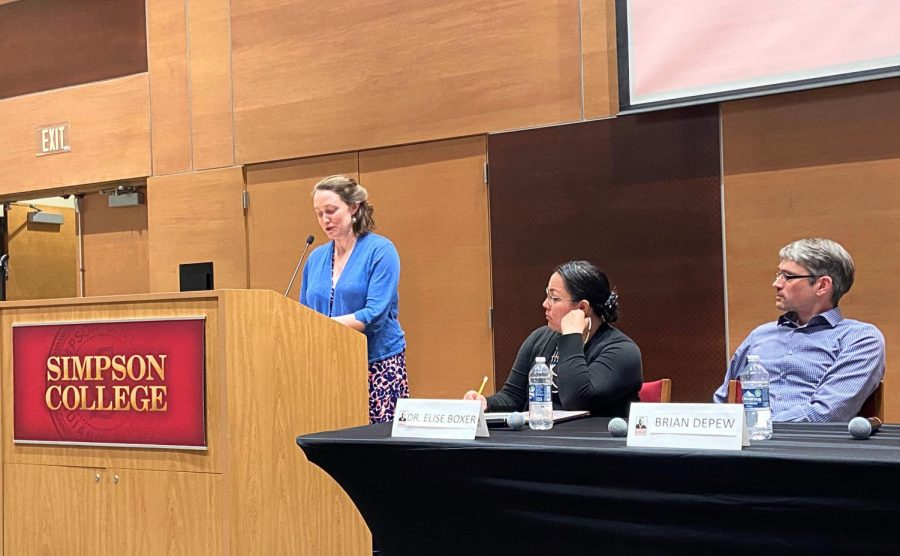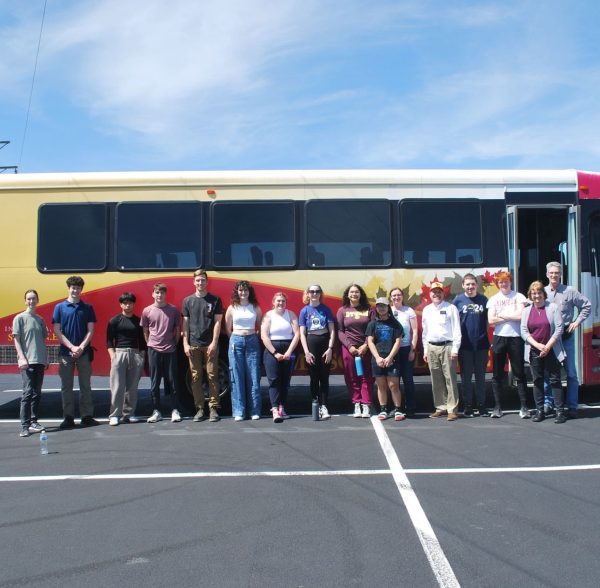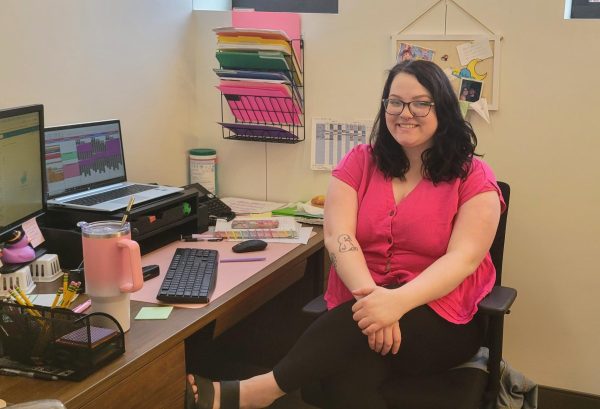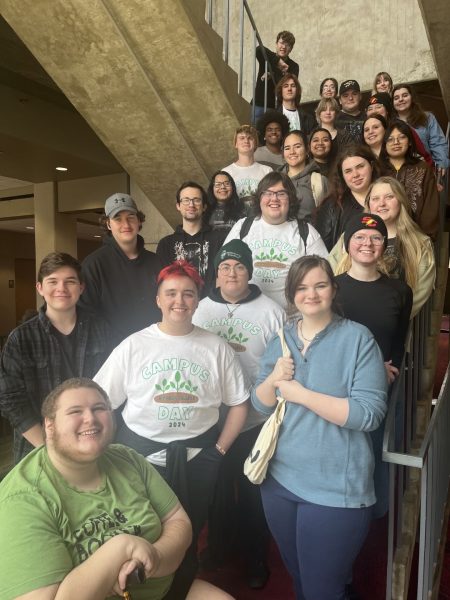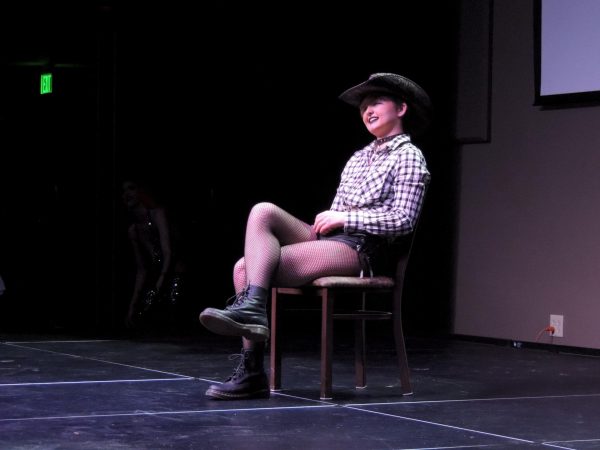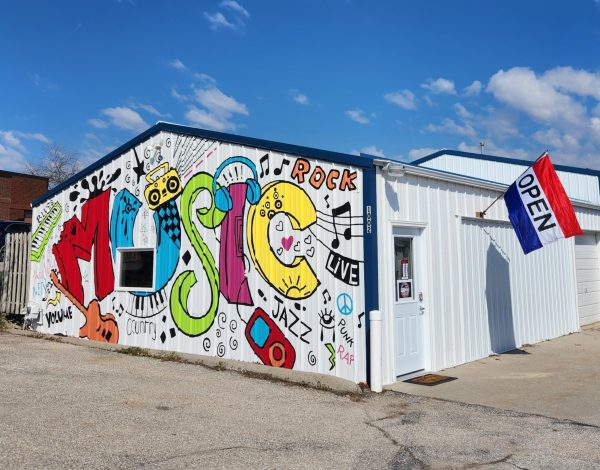Federal Policy and Rural Wellness
Elise Boxer, Brian DePew and Anna Johnson spoke on a panel regarding federal policy and rural wellness
April 12, 2023
No matter how you look at it, federal policies impact almost everything. Rural well-being is not an exception. The Culver Public Policy Center of Simpson College, along with interdisciplinary studies and the Center for Teaching and Learning, held a panel on such policy interacting with rural wellness on Thursday, April 6 to address exactly how and why rural citizens are receiving the brunt of these policies.
Among the panelists brought in were Associate Professor of History and Director of the Institute of American Indian Studies at the University of South Dakota, Elise Boxer, the Executive Director of the Center for Rural Affairs, Brian DePew and the Farm and Community Manager with the Center for Rural Affairs, Anna Johnson.
Rural can mean a lot of different things. Not inside an urbanized area, in a population of less than 50,000, in a population of less than 20,000, out in the countryside, on a farm, and so on and so forth. But no matter how you define “rural”, there is often policy lag on the federal level that is indicative of how the country, as a whole, stands.
Disproportionately, rural citizens see the ways federal policies negatively impact communities.
“There’s been a troubling trend in the last decade of rural hospitals closing,” DePew said. “130 rural hospitals nationwide closed in the last ten years.”
This means not only do rural citizens have to drive even further to receive basic healthcare, but this means that they delay getting the care they need. From breaking an arm on the farm to getting mental healthcare, it has all become a problem of accessibility.
Boxer noted that this is even worse for Native communities, a subsect of rural America, as healthcare looks completely different on federally-recognized Native reservations or Indian country.
Indian Country is mainly covered by the Indian Health Service, the primary healthcare that Indigenous people receive. A federally-run program initiated with the passing of The Snyder Act of 1921, Congress passed on the responsibility from the Department of the Interior to the Public Health Service. The program was passed for the “benefit, care and assistance of Indian People.”
This means there is a direct federal interest in the wellness of Indigenous peoples. Yet, the Indian Health Service is facing the reality of underfunding. There is a lack of proper healthcare in Indian country, and, as a whole, rural America is suffering as a result.
Federal policy goes beyond the issue of healthcare because rural America also faces the reality of structural racism.
“Working in agricultural spaces, our population is still predominantly white and our land is managed by white people… the number of black farmers has really plummeted in the last 100 years and part of the reason is due to USDA [United States Department of Agriculture] actions,” Johnson said. “The USDA has a whole network of offices, approximately one per county across the country. These are offices that are there to serve farmers. ”
There has been some action done on the federal level to address these inequities and aim to provide part of a solution for rural America, like President Biden’s American Rescue Plan that he introduced in 2021.
“Pine Ridge showcases this because I think that it highlights the issues—there are health issues, motives, obesity, diabetes and alcoholism. The list goes on,” Boxer said. “But the issue that COVID highlighted was infrastructure, because the Navajo Nation, where they’re located, is so isolated.”
The American Rescue Plan was brought to the surface in the midst of COVID-19, when the economy was starting to decline and average healthcare became more and more inaccessible due to COVID-19 and hospitals filling up, or worse, shutting down.
The plan aims to support rural and urban communities alike, but that does not mean rural America is a clear reflection of the state of the nation.
Rural America is also seeing federal policy impact education. In Jan. of this year, Governor Reynolds signed the Students First Act into law, which according to Iowa.gov, makes “state education funding available for K-12 students who choose to attend private schools.”
This also means that funds from rural public schools are being diverted. “These bills are not only a shift of public tax dollars, from public schools and private schools, and they’re also pretty inherently the shift of tax dollars from rural to urban areas,” DePew said.
No matter how you define “rural”, everything is interconnected, and federal policy is directly correlated with the well-being of an unurbanized area, in a population of less than 50,000, in a population of less than 20,000 or out in the countryside.



